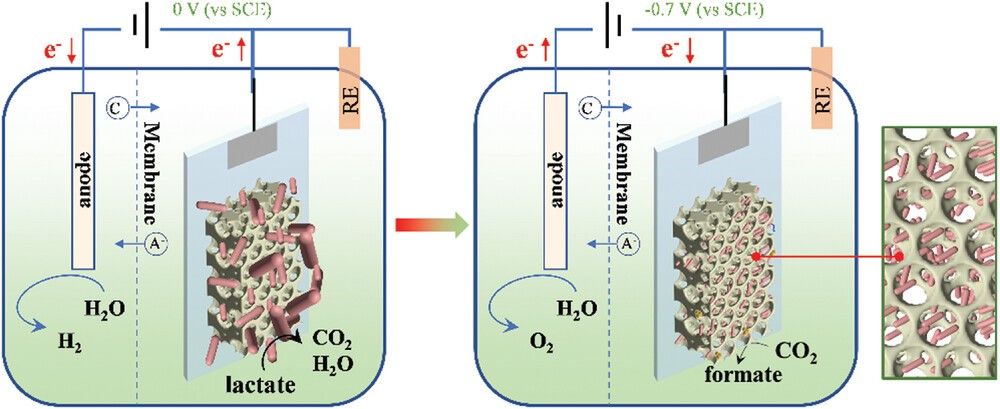Artificial and Biosynthetic Nanoparticles Boost Bioelectrochemical Reactions via Efficient Bidirectional Electron Transfer of Shewanella loihica
Bioelectrochemical reactions using whole‐cell biocatalysts are promising carbon‐neutral approaches because of their easy operation, low cost, and sustainability. Bidirectional (outward or inward) electron transfer via exoelectrogens plays the main role in driving bioelectrochemical reactions. However, the low electron transfer efficiency seriously inhibits bioelectrochemical reaction kinetics. Here, a three dimensional and artificial nanoparticles‐constituent inverse opal‐indium tin oxide (IO‐ITO) electrode is fabricated and employed to connect with exoelectrogens ( Shewanella loihica PV‐4). The above electrode collected 128‐fold higher cell density and exhibited a maximum current output approaching 1.5 mA cm ⁻² within 24 h at anode mode. By changing the IO‐ITO electrode to cathode mode, the exoelectrogens exhibited the attractive ability of extracellular electron uptake to reduce fumarate and 16 times higher reverse current than the commercial carbon electrode. Notably, Fe‐containing oxide nanoparticles are biologically synthesized at both sides of the outer cell membrane and probably contributed to direct electron transfer with the transmembrane c ‐type cytochromes. Owing to the efficient electron exchange via artificial and biosynthetic nanoparticles, bioelectrochemical CO 2 reduction is also realized at the cathode. This work not only explored the possibility of augmenting bidirectional electron transfer but also provided a new strategy to boost bioelectrochemical reactions by introducing biohybrid nanoparticles.

Schematic map of the bioelectrochemical reactions based on honeycomb-like 3D biohybrid electrode. The working electrode is IO-ITO and the exoelectrogens are S. loihica PV-4 cells.
https://doi.org/10.1002/smll.202400962